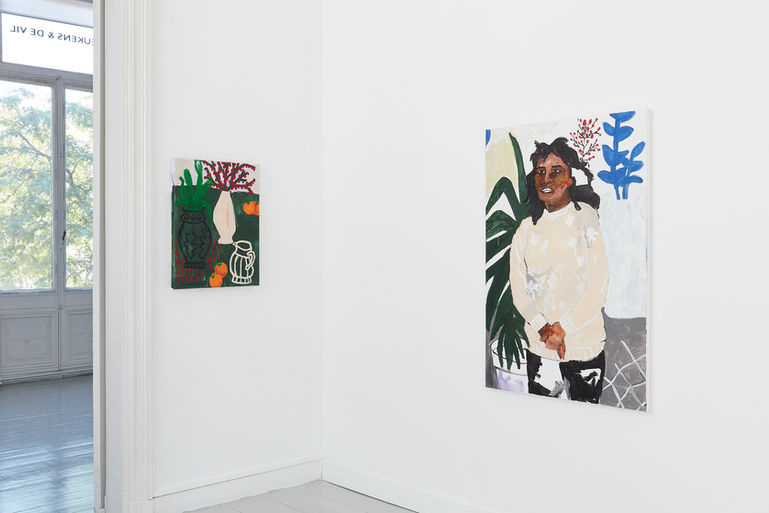top of page

SHIRLEY VILLAVICENCIO PIZANGO
Under the Same Moon with Stars as Shelter in a Land of Sand
Opening: 6 June from 11am-6pm
Geukens & De Vil, ANTWERP
Exhibition > 11 July 2020
galley view
In a new solo exhibition at Gallery Geukens & De Vil, Shirley Villavicencio Pizango (°1988, Lima-lives and works in Ghent) intertwines her present and past.
The artist, born in Peru, moved to Belgium when she was a late teenager. The crossover between these two cultures – and two very different parts of her life – is one of the main features defining her body of work. Drawing inspiration from her Peruvian heritage, travels and artists such as Gauguin, Picasso or Matisse, Villavicencio paints at a whirling pace. She mainly uses acrylic, which has a fast drying period and allows her to paint in a preferred spontaneous manner. The artist rejects conventional perspective and uses vivid colours, often inspired by other cultures to create paintings that rotate around one main motivation: people. Where others look, Villavicencio sees. Using the painterly process she creates an intimate dialogue with her subjects whom she often connects with motifs that remind of her South-American heritage: pottery, vegetal elements or traditional patterns like Nazca lines.
The current exhibition is a non-chronological investigation into the relationship with her biological mother and a tribute to her as a parent, but also as a woman dragged back and forth between a small village in the Amazon and Lima, a large metropolis. Villavicencio departs from the time she was little and the years they lived together in Villa El Salvador (a slum near Lima). Based on her own memories, old photographs and talks with her mother, Villavicencio remembers Villa El Salvador as a land of sand under the moon with the stars as a shelter. She complements the series with people that played an important role in her life at the time, such as her aunts or cousins, and hints small glimpses of some of the more intimate narratives hidden in her work by using poetic titles such as ‘Shadow of Absence’ in which she portrays the figure of an absent father.
Being defined by her past and the people surrounding her, Villavicencio positions herself in the centre of the series in a sequence of self-portraits. These portraits vary from the time when she lived in Villa El Salvador, up until now, concluding with an own interpretation of Manet’s Olympia, in which she places herself at the foreground of the painting as the woman and artist she is today.
Lien Craps
Anker Individual works
Photo credits: We Document Art, 2020
bottom of page











































